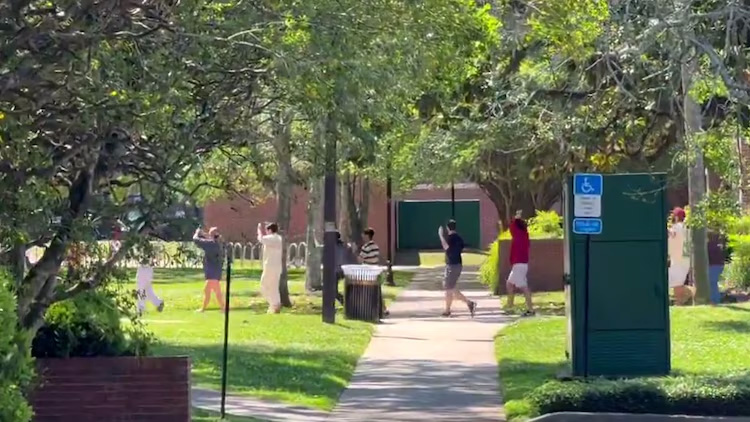Pipeline protesters urge unity after days of confrontations

CANNON BALL, ND -- Protesters trying to block the Dakota Access oil pipeline urged unity on Saturday while gathering near the burned-out construction vehicles that served as a barricade between activists and officers a day earlier.
Following two days of confrontations with law enforcement, about a hundred people prayed at the barricade in chilly, cloudy weather in southern North Dakota. The protesters later walked back to a camp where hundreds are staying to support the Standing Rock Sioux's effort to halt construction of the $3.8 billion pipeline
Dozens of people moved behind the burned vehicles and heavy plywood along a highway on Friday, facing concrete barriers, military vehicles and police in riot gear. Don Cuny, the encampment's security leader, said Saturday that the standoff "does not represent" the ongoing protest.
Cuny noted that disagreements have surfaced about how to demonstrate, but he said any instigators would be kicked out of the encampment. Stressing unity, he said: "More numbers make you more powerful."
The Standing Rock Sioux argues that the nearly 1,200-mile pipeline threatens water sources and cultural sites, but the Texas company behind the project, Energy Transfer Partners, insists it is safe. The pipeline is slated to carry North Dakota crude oil through South Dakota and Iowa to a shipping point in Patoka, Illinois.
"Enough is enough. Natives have been ignored throughout history," said Holly Doll, a tribal member who was among more than 60 protesters at another rally Saturday at the state Capitol in Bismarck. "Our voices may be small, but we are strong. This about looking ahead for future generations and protecting our water."
Only a handful of people, including some observers from Amnesty International, stayed into the evening Friday after protest leaders asked people to return to camp following the vehicle fires. The protest camp is near Cannon Ball, a town about 50 miles south of Bismarck.
Morton County Sheriff Kyle Kirchmeier described the protesters as "non-confrontational but uncooperative," and credited Standing Rock Sioux tribal members for helping to ease tensions.
Protest encampments set up to support the tribe have grown to thousands of people, drawing support from Native Americans around the country, environmentalists and others, including some celebrities.
The protest escalated last weekend, when demonstrators set up camp on private land along the pipeline's path that had recently been acquired by Energy Transfer Partners. On Thursday, more than 140 people were arrested as law enforcement - bolstered by reinforcements from several states - slowly moved in.
Kirchmeier said tribal representatives were later allowed onto the private property to remove teepees. Officers arrested one person, but no details were released.
But following that eviction, some protesters worked overnight to create two roadblocks of burned construction equipment and other vehicles.
Jolene White Eagle, 56, a lifelong Cannon Ball resident, watched as law enforcement officers massed near Friday's new blockade and called the police response "nonsense."
"It reminds me of something like a foreign country, what's happened here with all the destruction," she said.
The camp cleared on Thursday was located just to the north of the more permanent, larger encampment, which has been allowed on federally owned land and is a main staging area for hundreds of protesters.
A federal judge in September denied the tribe's request to block construction after it argued that the Army Corps of Engineers improperly issued permits.
North Dakota officials have said no culturally significant sites have been found in the area. But on the day the judge ruled, three federal agencies stepped in to order construction to halt on Army Corps-owned land around Lake Oahe, a wide spot of the Missouri River, while the Corps reviewed its decision.
Meanwhile, construction has been allowed to continue on private land owned by the developer, with a goal of completion by the end of the year.






